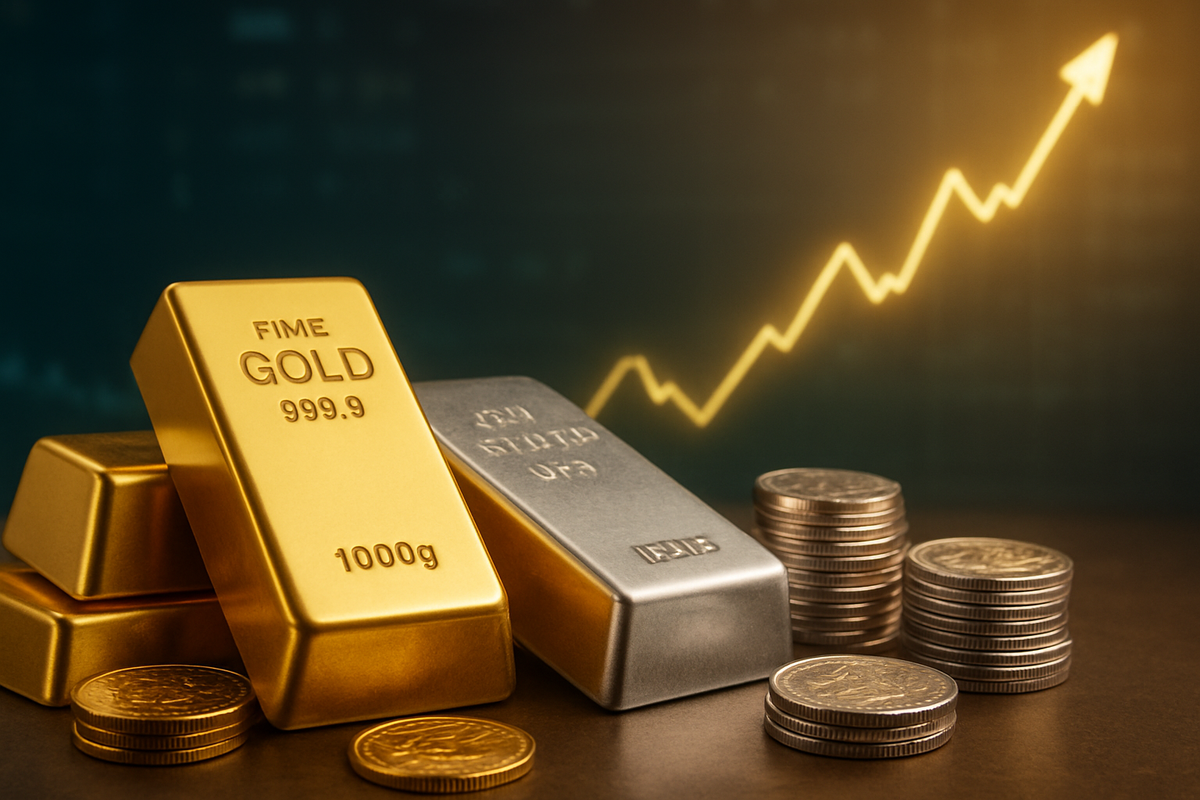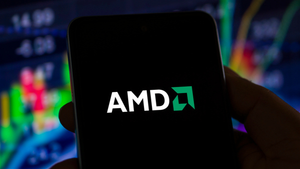
The precious metals market has recently experienced a fascinating period of volatility, with gold and silver futures undergoing a modest fall in late October and early November 2025, primarily driven by significant profit-taking pressure. This corrective phase saw both metals retreat from impressive highs, prompting questions about their immediate trajectory. However, as of November 13, 2025, the narrative has swiftly shifted, with both gold and silver demonstrating a robust rally, underscoring renewed investor confidence and a complex interplay of economic indicators.
This recent downturn, followed by a strong rebound, offers critical insights into market sentiment and the underlying factors influencing safe-haven assets. For investors, understanding the dynamics behind both the initial retreat and the subsequent surge is paramount to navigating the evolving landscape of the precious metals market and assessing its broader implications for financial stability and investment strategies.
From Correction to Recovery: A Detailed Look at Precious Metals' Recent Movements
The recent turbulence in precious metals began in late October 2025, following a period of extraordinary gains. Gold futures, which had soared to an all-time high of $4,381.98 per ounce, experienced a noticeable correction, declining by approximately 7% to around $4,067.70. This retreat was largely concentrated in October, with prices consolidating between $3,975 and $4,025 by early November. Silver futures mirrored this movement, enduring a substantial drop of nearly 10% in October from a peak near $55.51 per ounce, before stabilizing around the $48 level.
This corrective phase was primarily fueled by significant profit-taking pressure. After gold's "remarkable year-to-date performance of more than 50% gains in 2025" and silver's substantial surge, many investors, having reaped considerable profits, opted to reduce their exposure. This technical selling was exacerbated by the interaction of institutional profit-taking with algorithmic trading systems, leading to heightened price volatility. The decline in gold from its record high represented an 82.6% appreciation from baseline levels around $2,400, a trajectory that exceeded "sustainable momentum parameters," creating textbook conditions for a market correction.
Adding another layer to gold's retreat was a "hawkish cut" by the United States Federal Reserve (USFED) in late October. While the Fed delivered a 25-basis-point rate reduction, it tempered expectations for further easing, leading to a degree of profit-taking and a temporary withdrawal from safe-haven assets. However, the market's reaction was swift and decisive. As of November 13, 2025, both gold and silver futures have staged a remarkable rally. Spot gold has surged by 2.45% to $4,210.98 per ounce, reaching its highest level in over three weeks, driven by renewed investor interest amid global economic uncertainty. Gold futures for December delivery (COMEX: GC00) gained $23.20 (0.55%) to $4,236.80 per ounce.
Silver futures (COMEX: SI00) have also maintained a strong upward trajectory, with December delivery advancing 1.79% to $54.41 per ounce, hitting a new record high and marking its fifth consecutive winning session. This rally is attributed to several key factors, including the resolution of a prolonged US government shutdown, renewed expectations of further Fed easing in December 2025 (with the CME FedWatch tool indicating a 66% probability of rate cuts), persistent safe-haven demand due to underlying fiscal concerns, and de-dollarization efforts by nations like China and the BRICS bloc. Technically, gold appears stable above its 61.8% Fibonacci retracement level, while silver has broken above the $54.00 mark, signaling strong bullish momentum.
Corporate Fortunes in Flux: Winners and Losers in the Volatile Precious Metals Market
The recent price dynamics in gold and silver—an initial dip followed by a robust rally—create a distinct landscape of winners and losers among public companies and investment vehicles. The impact on these entities is multifaceted, touching upon stock performance, operational strategies, and long-term financial outlooks. As of November 13, 2025, with precious metals firmly in a bull market, companies with strong fundamentals are poised to capitalize on the renewed upward momentum.
Mining companies, being intrinsically linked to commodity prices, are perhaps the most directly affected. During the initial profit-taking phase in late October, major gold producers like Newmont Corporation (NYSE: NEM) and Agnico Eagle Mines Limited (NYSE: AEM) saw their shares decline by approximately 9%, mirroring the broader market correction. However, with the subsequent rally, these companies, along with peers such as Barrick Gold Corporation (NYSE: GOLD) and Kinross Gold Corporation (NYSE: KGC), are now experiencing a significant recovery. Low-cost producers with efficient operations, such as Silvercorp Metals (TSX: SVM) which boasts an All-In Sustaining Cost (AISC) of just over $12 per ounce against current silver prices around $54, are particularly well-positioned to maximize profit margins. The strong rally encourages increased exploration and development budgets, enabling these companies to expand reserves and production, pay down debt, and potentially increase shareholder returns, as seen with Barrick Gold and Pan American Silver (NASDAQ: PAAS) in Q3 2025.
Conversely, high-cost producers or those with significant debt burdens are more vulnerable. During the initial dip, their profit margins would have been severely squeezed, and their ability to invest in growth during the rally might be hampered. Companies with poor hedging strategies can also miss out on the full upside of a strong rally if their production is locked in at lower prices. Royalty and streaming companies, like Wheaton Precious Metals Corp. (NYSE: WPM), stand out as consistent winners. Their business model—providing upfront payments to miners in exchange for the right to purchase metals at predetermined prices—insulates them from operational cost inflation while directly benefiting from rising metal prices, offering significant margin expansion.
Exchange Traded Funds (ETFs) provide another lens through which to view the impact. Physical precious metal ETFs, such as SPDR Gold Shares (NYSEARCA: GLD) and iShares Silver Trust (NYSEARCA: SLV), directly track the price movements of their underlying commodities. Investors holding these during the initial fall would have seen a direct decline in value, but the current rally means a direct appreciation, offering a liquid way to gain exposure. More volatile are mining stock ETFs, like the VanEck Gold Miners ETF (NYSEARCA: GDX). While they experienced amplified declines during the October dip, they also offer leveraged exposure, meaning they can significantly outperform physical metals during a strong rally. For instance, GDX delivered over 125% returns since the start of 2025, compared to gold's 57% appreciation, highlighting the magnified gains (and losses) inherent in this investment vehicle.
Beyond direct producers and investment vehicles, other stakeholders are also affected. Industrial users of silver, particularly in sectors like solar panels, electronics, and electric vehicles, face increased production costs due to the metal's strong rally. This can impact their profitability and potentially lead to higher consumer prices. Meanwhile, central banks, which have been consistent buyers of gold, continue to act as a significant demand driver, providing a strong floor for gold prices and reinforcing its safe-haven appeal, thereby contributing to the overall stability and long-term bullish outlook for the precious metals market.
Beyond the Ticker: The Wider Significance of Precious Metals' Resurgence
The recent price action in gold and silver, characterized by an initial profit-taking dip followed by a powerful rally, carries significant implications that extend far beyond individual trading desks. This pattern, observed in November 2025, underscores a resilient bullish sentiment in the precious metals market, signaling a deeper response to ongoing global economic and geopolitical shifts. It highlights that the underlying demand and conviction in gold and silver as essential safe-haven assets are robust, capable of overriding short-term speculative corrections.
This volatility fits squarely within several broader industry trends for precious metals. As of November 13, 2025, the market is defined by persistent safe-haven demand, fueled by geopolitical tensions in Eastern Europe, the Middle East, and Asia, coupled with trade disputes and pervasive global economic uncertainty. Gold's consistent new highs, surpassing $4,300 per ounce in October and maintaining above $4,200 in mid-November, along with silver's record high of $54.50 per ounce, are testament to this. Furthermore, expectations of dovish monetary policies from central banks, particularly the Federal Reserve, with an 80% probability of a September rate cut and further cuts anticipated in December 2025, reduce the opportunity cost of holding non-yielding assets, making gold and silver more attractive. The ongoing "de-dollarization" efforts by central banks, especially in emerging markets, through record-breaking gold purchases (projected to reach 750-900 tons in 2025), provide a strong fundamental floor for gold prices. Silver also benefits from robust industrial demand from green technologies like solar panels and electric vehicles, contributing to persistent supply deficits and bolstering its price.
The ripple effects of this precious metals surge are felt across various sectors. For precious metals mining and holding companies, the rally is profoundly positive, boosting stock performance and revenue. However, for industries heavily reliant on gold and silver as critical components, such as electronics and certain automotive sectors, increased input costs become a concern. This can incentivize the search for substitute materials or drive innovation in material efficiency. The financial sector also experiences increased activity in refining, trading, and providing financial instruments tied to precious metals, with financial advisors potentially recommending higher allocations to these assets as a hedge against inflation and currency debasement.
Regulatory and policy implications also come into sharper focus during periods of significant precious metals volatility. Central bank actions, particularly the Federal Reserve's interest rate decisions and liquidity programs, are under intense scrutiny, with market interpretations of "ample liquidity" as "stealth Quantitative Easing (QE)" highlighting the need for clear communication. Historically, concerns about market manipulation, especially in silver markets, have led to heightened surveillance by bodies like the Commodity Futures Trading Commission (CFTC) to prevent deceptive practices. Moreover, the U.S. Department of Interior's recent addition of silver to its critical minerals list underscores its strategic importance, potentially leading to policies supporting domestic mining and supply chain resilience.
Historically, the current scenario echoes several periods of precious metals surges. The 1970s gold rush, driven by high inflation and geopolitical uncertainty after the decoupling of the U.S. dollar from gold, bears striking similarities. Silver's own dramatic spikes in 1980 and 2011, often followed by profit-taking and corrections, provide a precedent for its higher percentage volatility compared to gold. The current rally, however, is distinguished by the unprecedented level of central bank buying, which provides a unique and powerful underpinning. The gold-silver ratio, currently around 81-83:1, also suggests significant room for further appreciation, especially for silver, if historical bull market conclusions (around 15:1) are to be considered. These historical parallels reinforce the notion that the recent price movements, while volatile, are part of a larger, well-established pattern driven by fundamental economic and geopolitical forces.
The Road Ahead: Navigating the Future of Precious Metals
Looking forward, the trajectory for gold and silver, particularly in the wake of their recent profit-taking dip and subsequent powerful rally, appears largely bullish. As of November 13, 2025, the market is poised for continued upward momentum, driven by a complex interplay of macroeconomic forces, persistent geopolitical tensions, and burgeoning industrial demand. Both short-term and long-term forecasts point to significant upside potential, though investors and companies will need to remain agile in a dynamic environment.
In the short term, extending through the remainder of 2025 and into early 2026, gold is anticipated to consolidate around its current elevated levels, with analysts projecting prices to range between $3,800 and $4,000 per ounce, with more aggressive forecasts targeting $4,400-$4,700. The expectation of a December Federal Reserve rate cut, despite recent mixed signals, could provide a further impetus by reducing the opportunity cost of holding the non-yielding asset. Silver is expected to maintain its dynamic performance, with forecasts for 2025 suggesting prices could range from $36 to $64 per ounce, potentially reaching $67.09 by year-end, and testing the $55-$60 range within the next one to two years.
The long-term outlook, spanning 2026 and beyond, is even more robust. Gold prices are widely predicted to reach $4,700-$5,000 per ounce by late 2026, with some institutional models projecting a ceiling of $6,000 by 2028. Silver's long-term potential is particularly compelling, with professional forecasts targeting $59 per ounce by late 2026 and aggressive predictions suggesting it could surpass $100 per ounce in the medium term, and even $140 by 2030. This sustained growth is underpinned by factors such as persistent inflation, ongoing geopolitical tensions, the accelerating green energy transition driving industrial demand for silver, and continued de-dollarization efforts by central banks globally.
For investors, strategic pivots and adaptations will be crucial. Diversification, with precious metals serving as a hedge against economic uncertainty, remains a cornerstone, with recommendations often suggesting a 10-15% portfolio allocation. Opportunistic accumulation during market consolidation phases or when the gold-silver ratio is high can prove effective. Companies in the mining sector face opportunities for growth due to strong demand and supply constraints, but also challenges related to the increasing difficulty of developing new projects, particularly in politically unstable regions. The choice between physical bullion and paper assets like ETFs will depend on individual risk tolerance and investment objectives.
Market opportunities abound, including the continued safe-haven appeal of both metals, their role as an inflation hedge, the industrial boom for silver, and sustained central bank buying. However, challenges persist, such as inherent volatility (especially in silver), potential U.S. dollar strength, unexpected shifts in monetary policy, and increased regulatory scrutiny on mining practices. Overall, the most widely anticipated scenario is a continued bull market, though it may be a volatile ascent. Silver, given its higher beta and strong industrial demand, has the potential to outperform gold, and temporary corrections should be viewed as buying opportunities for long-term investors.
Conclusion: Precious Metals Solidify Their Enduring Role in a Volatile World
The recent journey of gold and silver futures—from a modest dip driven by profit-taking to a powerful and sustained rally—offers a compelling narrative of resilience and renewed significance in the global financial landscape. As of November 13, 2025, this pattern unequivocally reinforces the enduring role of precious metals as indispensable safe-haven assets and potent hedges against the pervasive uncertainties of our time. The initial correction, far from signaling a weakening trend, was merely a technical pause, swiftly overcome by robust underlying demand.
Moving forward, the market assessment remains overwhelmingly bullish for both gold and silver through the end of 2025 and well into 2026. Gold is widely expected to maintain prices above $4,000 per ounce, with aggressive forecasts reaching $4,560 in 2025 and potentially $5,000 by 2026. Silver, with its dual role as a monetary and industrial metal, is poised for even more dynamic growth, projected to average around $38.45 in 2025 and $50 in 2026, with some analysts anticipating it could touch $100 by 2026. This optimism is underpinned by a confluence of factors: the anticipation of Federal Reserve rate cuts, a weakening U.S. dollar, persistent geopolitical tensions, relentless central bank gold accumulation, and surging industrial demand for silver, particularly from the burgeoning green energy sector.
The lasting impact of these movements is profound. They underscore the reinforced safe-haven status of gold and silver in an era of heightened economic and geopolitical instability. Both metals continue to serve as critical inflation hedges, protecting against the erosion of purchasing power. Crucially, the current market environment is prompting a significant re-evaluation of portfolio strategies, with investors increasingly recognizing the necessity of diversifying into precious metals as reliable stores of value and potent hedges against systemic risks. Silver's unique dual advantage, benefiting from both monetary and industrial demand, positions it for amplified gains during periods of both inflation and economic expansion. Many analysts now view these bullish drivers as structural, suggesting a sustained trend as investors and central banks actively seek alternatives to traditional U.S. dollar-denominated assets.
For investors, vigilance and strategic positioning will be key in the coming months. It is paramount to monitor Federal Reserve monetary policy, particularly the timing and pace of interest rate adjustments, as well as critical U.S. economic data. Geopolitical developments, including any shifts in global conflicts or trade tensions, will continue to influence safe-haven demand. The trajectory of U.S. national debt and concerns over fiscal health could provide further structural support for precious metals. For silver, specifically, investors should keep a close eye on trends in industrial demand from sectors like solar and electric vehicles, alongside global supply dynamics and inventory levels, which have recently driven pronounced shortages. Monitoring key technical levels for both metals and the gold-silver ratio can also provide valuable insights into market sentiment and relative strength. While short-term corrections due to profit-taking are always a possibility, the fundamental backdrop for gold and silver futures remains exceptionally strong, suggesting that these precious metals will continue to be highly significant assets in well-diversified portfolios.
This content is intended for informational purposes only and is not financial advice





